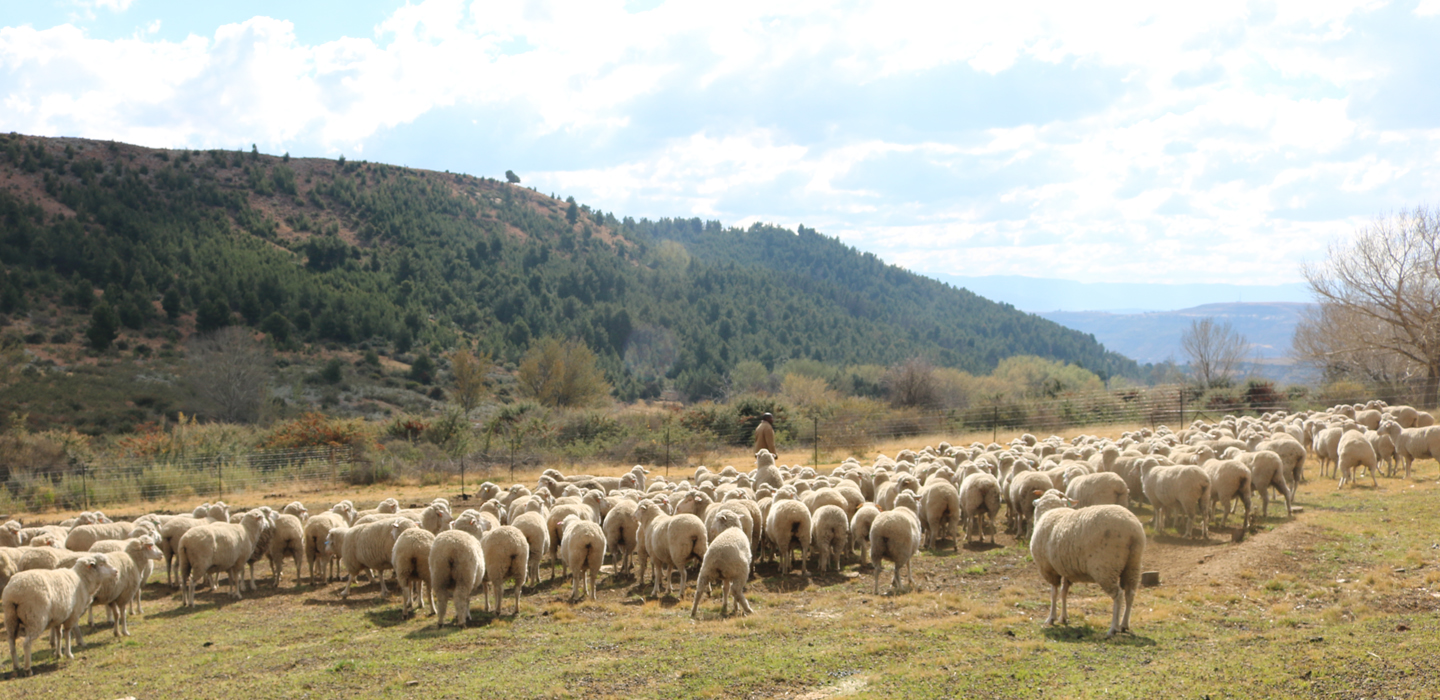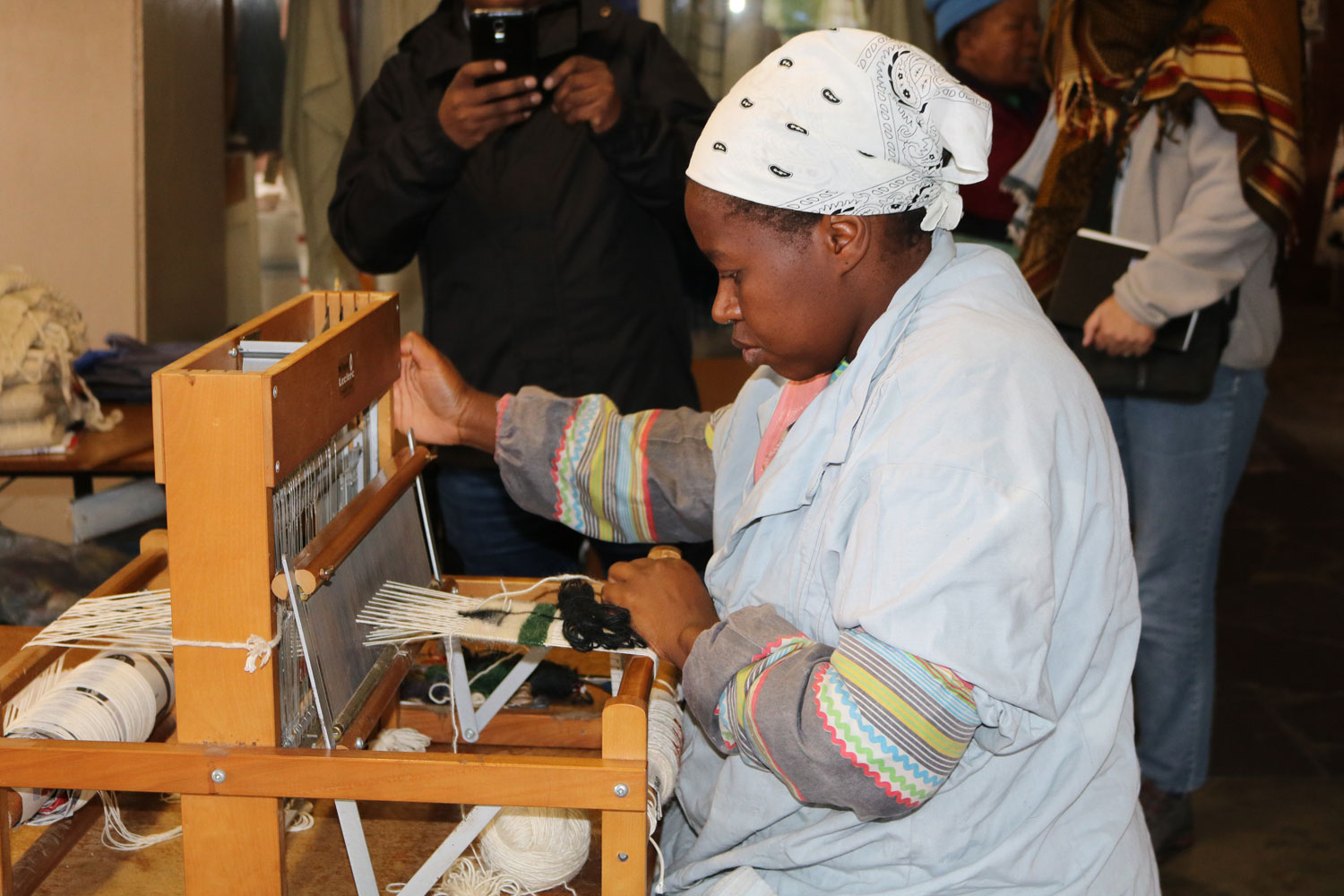Spinning yarns – Investing in wool and mohair in Lesotho
IFAD Asset Request Portlet
Asset Publisher
Spinning yarns – Investing in wool and mohair in Lesotho
Estimated reading time: 3 minutes
Wool and mohair form the bedrock of Lesotho’s rural economy. Producers range from smallholder farmers with small flocks, to breeders of large flocks of superior gene-quality animals. With over 1.2 million sheep and 845,000 goats there is a lot of potential to develop the industry. Wool is the leading commodity exported by Lesotho and mohair is the fifth largest.
On average, one sheep yields almost three kilos of wool and, in the case of mohair, one goat yields under one kilo of wool.
The Wool and Mohair Promotion Project (WAMPP) addresses the challenges in the production of wool and mohair in Lesotho. Working with farmers, the project improves the quality and quantity of wool and mohair produced. It looks at climate smart rangeland management, improving the quality and quantity of wool and mohair by focusing on animal nutrition, breeding and health breeding and general husbandry practices, and processing and marketing to build this growing cottage industry.
The ultimate goal of the project is to boost the economic and climate resilience of poor, smallholder wool and mohair producers to the adverse effects of climate change in the mountain and foothill regions of Lesotho.
Climate-smart rangeland management
Rangelands provide primary feeding for most of Lesotho’s wool and mohair producers. Working in with the National University of Lesotho, the project trains farmers to produce fodder in the different agro-ecological zones of the country. WAMPP works with local authorities and communities to lay the foundation for range rehabilitation activities that are centred on the direct involvement of users. The project also supports the adoption of legislation to ensure effective regulation of rangelands. In tandem with the Ministry of Forestry, Range and Soil Conversation, the project contributes to the enactment of legislation that will bolster the regulatory framework for rangeland management.
WAMPP has introduced farmers to new approaches for weather and climate information. For example, farmers in Thaba-Tseka can now receive weather updates via SMS on their mobile phones. Warning them of a high probability of unfavourable weather (heavy rains, hail or snow), this system can help farmers make decisions, for instance delaying the shearing of the flock if snow is forecast.
Improving wool and mohair quality
The quality and quantity of wool and mohair is influenced by a number of factors, in particular animal nutrition, access to genetic material, animal health and livestock extension services. In order to address these factors, the project transferred two breeding centres to the Lesotho National Wool and Mohair Growers Association. The breeding centres provide quality breeding animals to Basotho farmers to increase the quality of wool and mohair.
One of the centres, the Quthing sheep stud breeding centre, was opened in 2017 and received 16 stud rams and over a thousand ewes. More than 160 lambs were birthed in the current lambing season and 250 ewes are in gestation. It is hoped that 161 rams will be available for sale to Basotho farmers by early 2020.
To improve the health of the animals Community Animal Health Workers (CAHWs) have been trained across the country to address the deficiency of veterinary services and improve the health of the animals.
Investments have also gone towards upgrading infrastructure. So far, 43 existing shearing sheds have been renovated and 22 new sheds have been built. Construction projects also ensure that feeder roads that connect to shearing sheds are accessible and sheds are electrified, using solar energy where possible.
Shearing sheds at Pela-Tšoeu and Fobane in Leribe (north-west part of the country) already enjoy access to running water. Boreholes and spring sources provide drinking water for both animals and people. In most areas, the project also provides drinking water to the communities surrounding shearing sheds.

Processing and marketing
Women and youth are targeted in particular and the project aims to increase their participation in the wool and mohair sub-sector. The project provides avenues for capacity-building of the sector through training and business development.
A vital link in improving the wool and mohair industry is the shearing shed, a critical hub where activities geared towards wool and mohair processing happen. Shearing, classing and record-keeping are fundamental phases in the process of presenting wool for sale. Lesotho has a network of more than 130 shearing sheds and capacity-building activities targeting shearers, classers and recorders are being rolled out across the country.
The project also collaborates with tertiary institutions to mobilize the youth to participate in the wool and mohair value chain. By infusing new ways of thinking and doing things, youth are the catalyst to produce for and sell to international markets. The project has also begun to mobilise youth cooperatives and encourage them to set up commercial enterprises to generate higher incomes and more sustainable livelihoods.
Publication date: 18 November 2019